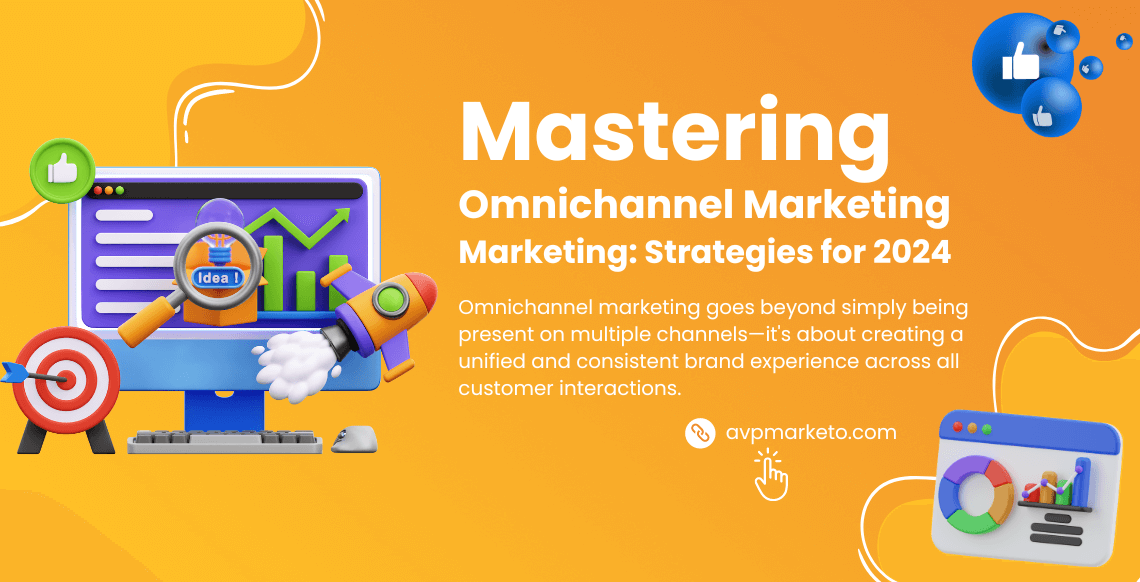Introduction: A Personal Anecdote
Last weekend, I found myself in a familiar modern scenario. Browsing my favorite clothing brand’s website on my phone while sipping my morning coffee, I quickly found a jacket I liked but wasn’t quite ready to buy. Later that day, as I switched to my desktop, there it was again—same jacket, this time with a pop-up offering a 10% discount if I signed up for their newsletter. By evening, I saw an Instagram ad showcasing the jacket styled in different ways, and when I finally decided to purchase, I did it through their app, using a one-click checkout. Seamless, integrated, and undeniably effective.
This anecdote perfectly illustrates the power of a well-executed omnichannel marketing strategy. As we step into 2024, the importance of providing a cohesive customer experience across all touchpoints cannot be overstated. In this article, we’ll explore key strategies to master omnichannel marketing, ensuring your brand is ready to meet the demands of today’s tech-savvy consumers.
Understanding Omnichannel Marketing
Definition and Importance
Omnichannel marketing goes beyond simply being present on multiple channels—it’s about creating a unified and consistent brand experience across all customer interactions. Unlike multichannel marketing, which may handle each channel independently, omnichannel marketing integrates all channels to provide a seamless customer journey. This integration is crucial for delivering a cohesive customer experience, ensuring that whether your customer is engaging with your brand online, in-store, or on social media, they receive a consistent and personalized experience.
Current Trends
As we look ahead to 2024, several key trends are shaping the future of omnichannel marketing:
- Increased Use of AI and Machine Learning: AI is enhancing personalization, predicting customer needs, and automating responses.
- Cross-Channel Data Integration: Seamless data integration across channels is crucial for understanding and predicting customer behavior.
- Personalization: Consumers expect tailored experiences that cater to their preferences and behaviors.
Key Components of a Successful Omnichannel Strategy
Customer-Centric Approach
Understanding your customer journey is the foundation of a successful omnichannel strategy. Start by mapping out touchpoints and gathering data to create personalized experiences. Utilize customer data to understand their preferences, behaviors, and pain points. This allows you to tailor your marketing efforts to meet their specific needs and enhance their overall experience with your brand.
Consistent Branding and Messaging
Consistency is key in omnichannel marketing. Your branding and messaging should be uniform across all channels to build trust and recognition. Successful brands maintain this consistency, ensuring that their voice, tone, and visuals are aligned, whether customers are interacting with them via email, social media, or in-store.
Integrated Technology Stack
A unified technology stack is essential for supporting your omnichannel efforts. Invest in tools and platforms that facilitate data integration, automation, and analytics. This includes Customer Relationship Management (CRM) systems, marketing automation platforms, and analytics tools that help you track and analyze customer interactions across all channels.
Implementing Omnichannel Strategies
Personalization at Scale
Personalized experiences are a cornerstone of effective omnichannel marketing. Leverage data and AI to create personalized content and offers. This might include personalized product recommendations, targeted email campaigns, and customized website experiences. The goal is to make each customer feel like your brand truly understands and caters to their individual needs.
Seamless Cross-Channel Integration
Ensuring a seamless transition between channels is critical. For example, if a customer starts a purchase on your mobile app but completes it on your desktop site, the experience should be smooth and uninterrupted. This requires unified customer profiles and real-time data synchronization, enabling a continuous and cohesive customer journey.
Engaging Content and Interactive Experiences
Create engaging, interactive content that resonates across multiple channels. This could include interactive videos, social media campaigns, and in-app experiences that encourage customer engagement and drive conversions. Successful omnichannel campaigns are those that captivate audiences and provide value at every touchpoint.
Measuring and Optimizing Omnichannel Efforts
Key Metrics and KPIs
To track the success of your omnichannel strategies, focus on key metrics and KPIs such as customer engagement, conversion rates, and customer lifetime value. These metrics provide insights into how well your strategies are performing and where adjustments may be needed.
Continuous Improvement
Regular analysis and optimization are essential for long-term success. Use analytics tools to gain insights into customer behavior and campaign performance. Continuously refine your strategies based on data-driven insights to enhance the customer experience and drive better results.
Conclusion: Your Growth Journey, Our Expertise
As we’ve explored, adopting a robust omnichannel strategy is essential for success in 2024. By understanding your customers, maintaining consistency, and leveraging the right technology, you can create a seamless and personalized experience that drives growth and loyalty.
At AVP Marketo, we are here to help you navigate this journey. Our expertise in data-driven strategies and AI-enabled solutions ensures that your brand stands out in a competitive digital landscape. Ready to take your omnichannel marketing to the next level? Contact us today to schedule a consultation and discover how we can support your growth journey.


